
漢德百科全書 | 汉德百科全书
 History
History

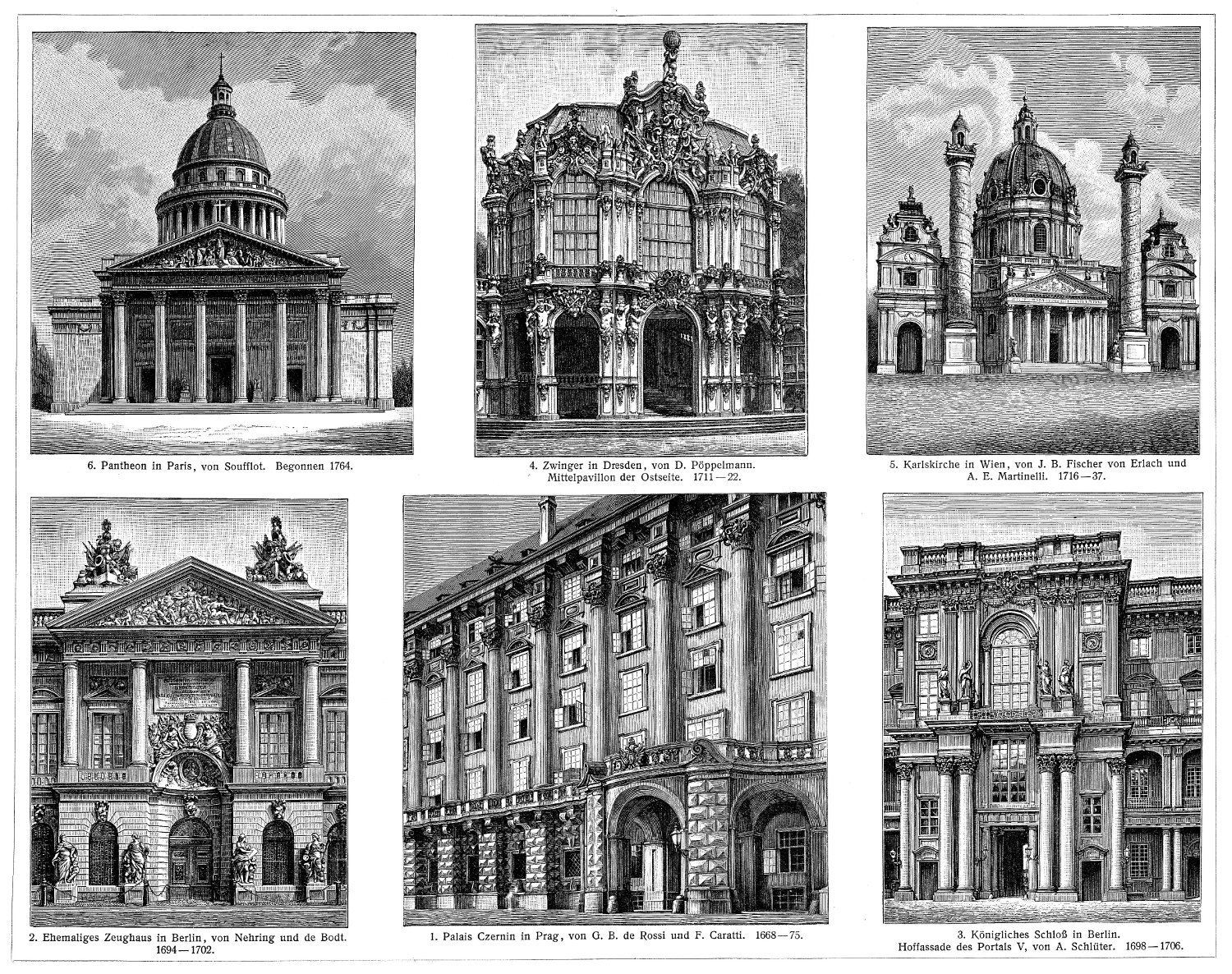
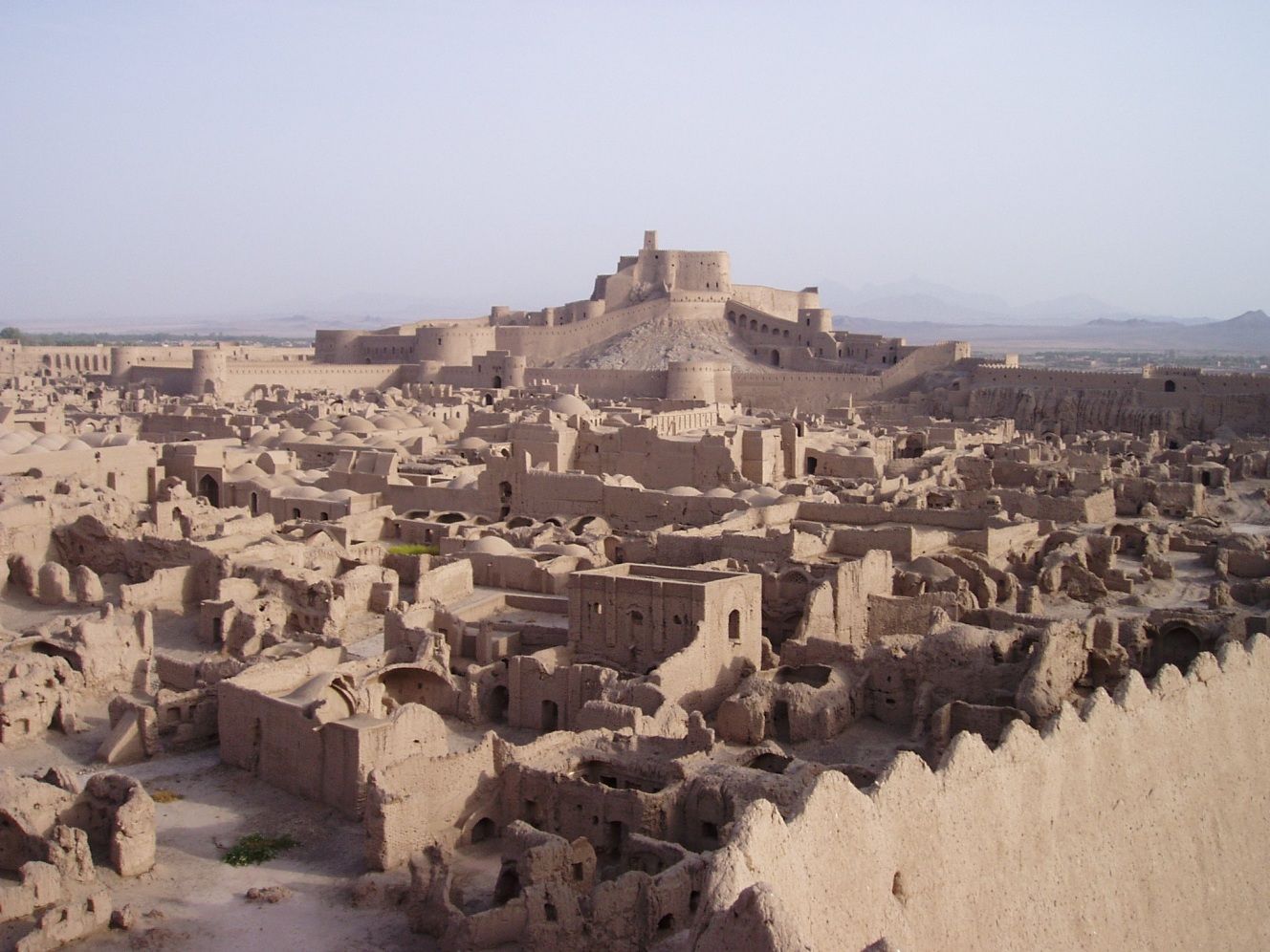
Die Zitadelle von Bam in der Wüste im Süden des iranischen Hochplateaus stammt ebenfalls aus der Periode der Achämeniden (6. bis 4. vorchristliches Jahrhundert). Ihre goldene Zeit erlebte die Stadt vom 7. bis 11. Jahrhundert als Kreuzungspunkt der Handelsrouten und als Produktionsstätte von Seiden- und Baumwolltextilien. Ihre Moschee ist eine der ältesten des Iran. Die UNESCO hat Bam zugleich in die Rote Liste des gefährdeten Welterbes aufgenommen. Die Stadt wurde am 26. Dezember 2003 von einem Erdbeben der Stärke 6,5 heimgesucht, dem über 26.000 Menschen zum Opfer fielen.

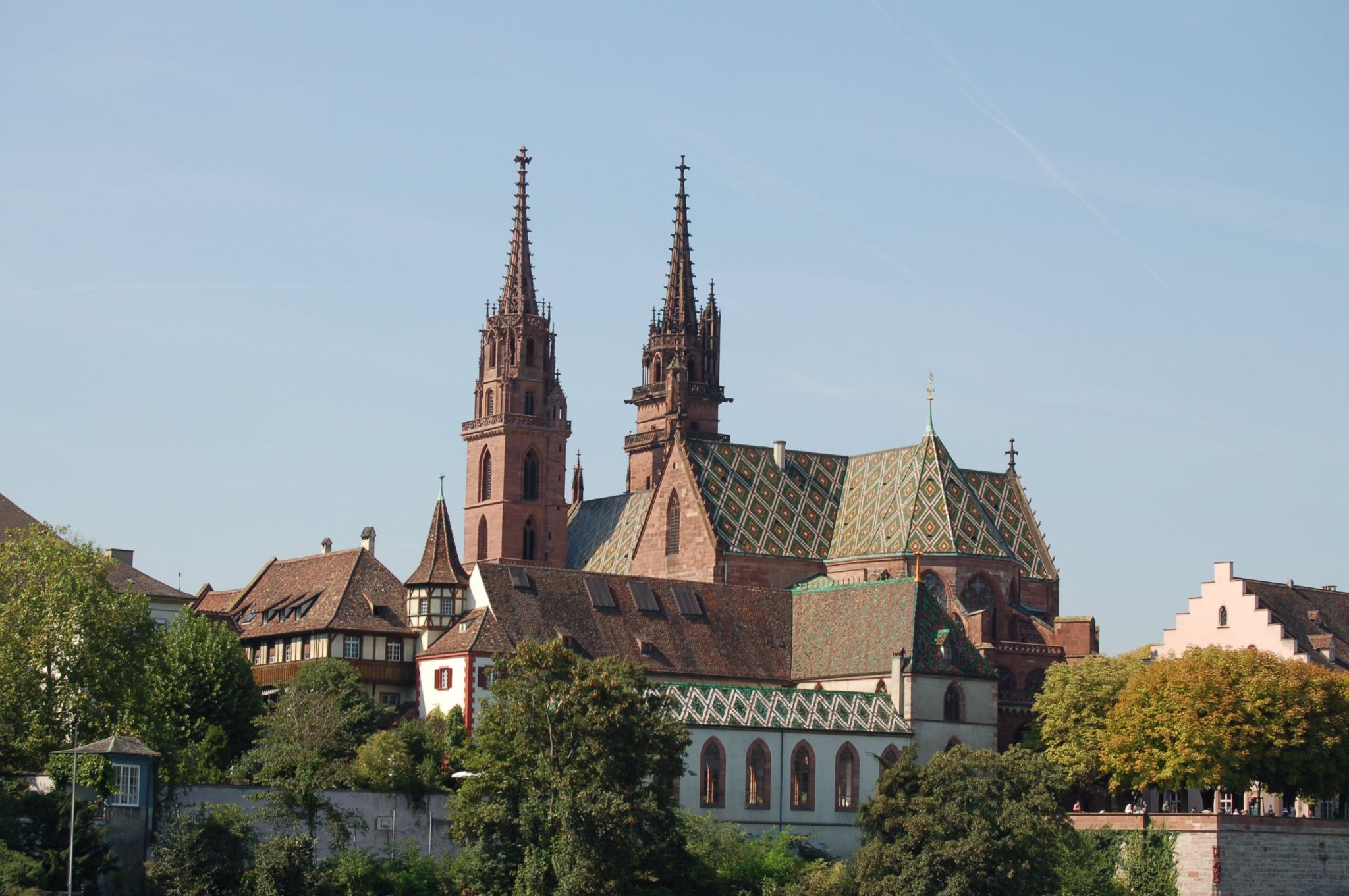
Das Basler Münster ist eine der Hauptsehenswürdigkeiten und ein Wahrzeichen der Stadt Basel in der Schweiz. Das Münster prägt mit Fassaden aus rotem Sandstein und den bunten Dachziegeln, seinen beiden schlanken Kirchtürmen und den sich kreuzweise durchdringenden Hauptdächern das Stadtbild. Die ehemalige Bischofskirche, heute evangelisch-reformiert, wurde zwischen 1019 und 1500 im romanischen und gotischen Stil erbaut.
Dem Basler Münster vorgelagert ist der nach ihm benannte Münsterplatz, der von vielen ehemaligen Domherrenhäusern gesäumt wird. Im baseldeutschen Dialekt wird es einfach als Minschter ([ˈmɪnːʃtə̆ʁ]) bezeichnet.
巴塞尔大教堂(德语:Basler Münster)是瑞士巴塞尔的主要地标,这是一座红色砂岩建筑,彩色屋瓦,两个小塔,主屋顶十字型交叉。巴塞尔大教堂列入瑞士国家遗产名单[1]。
 Breakthrough Prize
Breakthrough Prize
 Breakthrough Prize in Life Sciences
Breakthrough Prize in Life Sciences

 Colleges and Universities in Europe
Colleges and Universities in Europe

 History
History
 L 1000 - 1500 AD
L 1000 - 1500 AD

 Medical, Pharmaceutical, Rehabilitation
Medical, Pharmaceutical, Rehabilitation
 Medical colleges/Research Institute
Medical colleges/Research Institute
 Nobel prize
Nobel prize
 Nobel Prize in Literature
Nobel Prize in Literature
 Nobel prize
Nobel prize
 Nobel Peace Prize
Nobel Peace Prize
 Nobel prize
Nobel prize
 Nobel Prize in Physiology or Medicine
Nobel Prize in Physiology or Medicine
 Nobel prize
Nobel prize
 Nobel Prize in Chemistry
Nobel Prize in Chemistry
 Nobel prize
Nobel prize
 University/Institute
University/Institute
 Universities in Switzerland
Universities in Switzerland

 Science and technology
Science and technology
 *World famous research institutions
*World famous research institutions



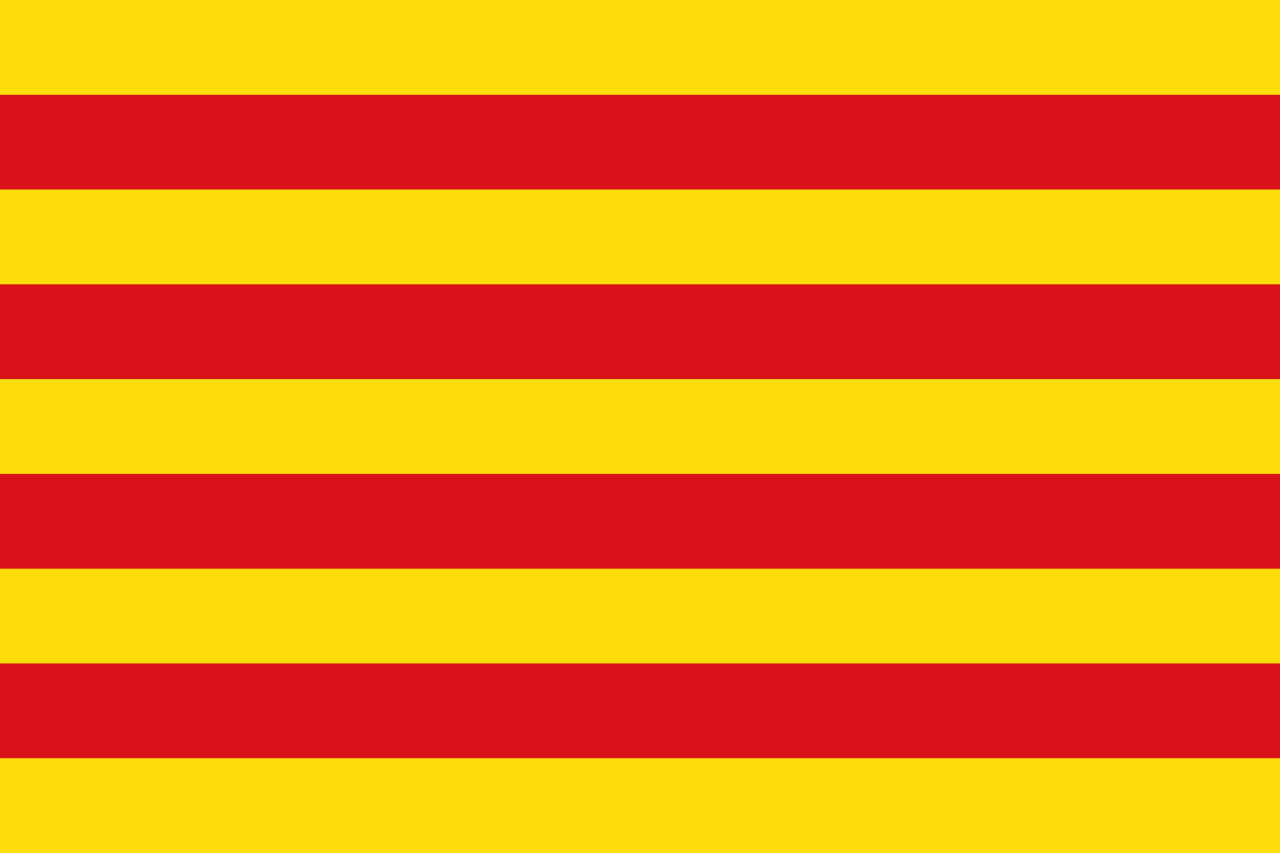 Cataluña
Cataluña
 Coimbra Group
Coimbra Group

 Colleges and Universities in Europe
Colleges and Universities in Europe

 History
History
 L 1000 - 1500 AD
L 1000 - 1500 AD
 League of European Research Universities,LERU
League of European Research Universities,LERU

 Medical, Pharmaceutical, Rehabilitation
Medical, Pharmaceutical, Rehabilitation
 Medical colleges/Research Institute
Medical colleges/Research Institute
 Sinology
Sinology
 Universities in Spain
Universities in Spain
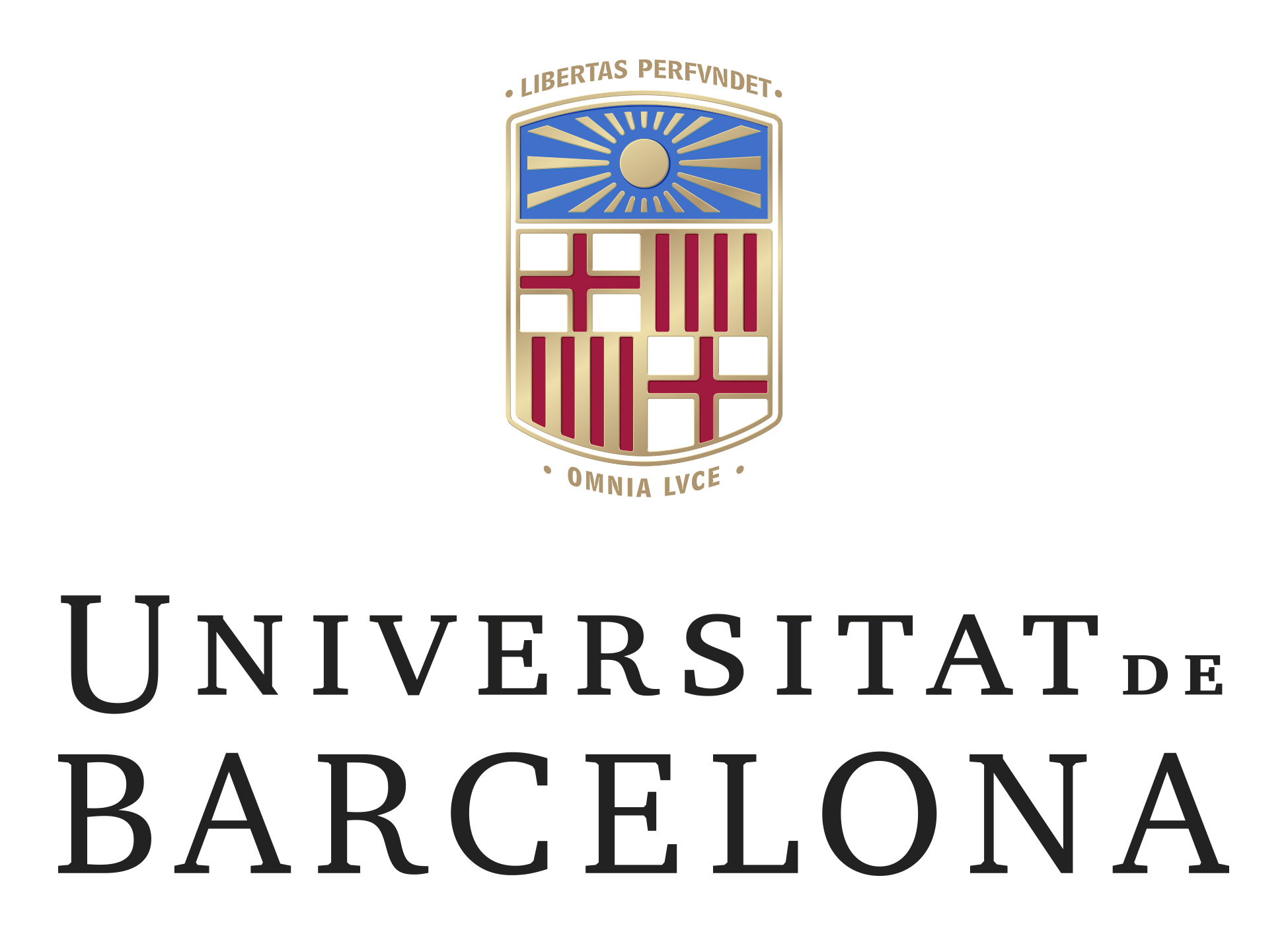
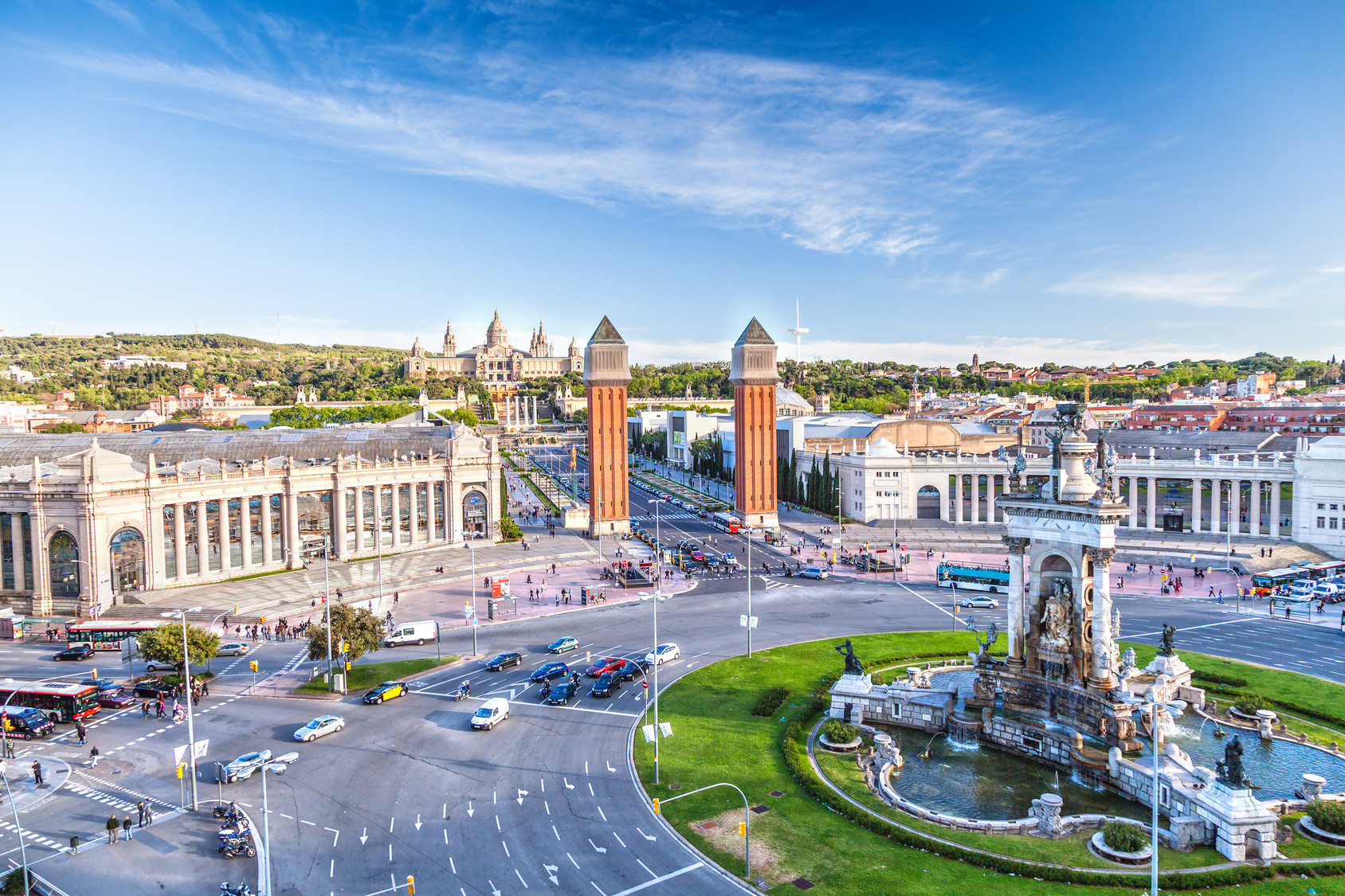
Barcelona (katalanisch [bəɾsəˈɫonə]; spanisch [baɾθeˈlona]; deutsch [baɐ̯səˈloːna] oder [baɐ̯t͡səˈloːna]) ist die Hauptstadt Kataloniens und nach Madrid die zweitgrößte Stadt Spaniens. Sie liegt am Mittelmeer, circa 120 Kilometer südlich der Pyrenäen und der Grenze zu Frankreich. Barcelona ist Verwaltungssitz der gleichnamigen Provinz und der Comarca Barcelonès.
Innerhalb des Stadtgebietes leben etwa 1,65 Millionen Menschen. Damit ist Barcelona die elftgrößte Gemeinde der Europäischen Union, nach Hamburg die zweitgrößte, die nicht die Hauptstadt eines Mitgliedstaates ist, und nach Paris die am zweitdichtesten besiedelte Millionenstadt Europas. Zusammen mit den in der Àrea Metropolitana de Barcelona zusammengeschlossenen Gemeinden der Agglomeration beträgt die Einwohnerzahl 3,16 Millionen. Im weiteren Einzugsbereich der Metropolregion (Àmbit Metropolità de Barcelona) leben insgesamt 4,86 Millionen Menschen. Mit jährlich mehr als sieben Millionen Touristen aus dem Ausland zählt Barcelona überdies zu den drei meistbesuchten Städten Europas.[2]
这座城市在展示通俗文化的同时,也没有忘记根深蒂固的传统。比如说,梅尔塞节还有在格拉西亚区、桑斯区或波布雷诺区举办的节庆活动,都向游客提供着不可多得的认识巴塞罗那的欢庆一面的机会。
以蔬果,新鲜水产香肠和橄榄油为基本原料,传统与现代相融合的烹饪手艺可以烹制出具有革新性又富有想象力的美食。于此,手工糖果和泡沫葡萄酒只能浅浅地触摸到巴塞罗那饮食文化的精髓。
巴塞罗那(加泰罗尼亚语:Barcelona,西班牙语:Barcelona)是西班牙加泰罗尼亚首府和巴塞罗那省省会,位于伊比利亚半岛的东北面,濒临地中海,全市人口约160万,都会区人口则约500万,为加泰罗尼亚第一大城。加泰罗尼亚的议会、行政机构、高等法院等政府中枢机构,以及最高首长均驻设于此。1999年,巴塞罗那由美国《国家地理杂志》评选为50个人生必游景点之一。
相传巴塞罗那由迦太基将领、汉尼拔的父亲哈米尔卡·巴卡所兴建,在其漫长的历史上还曾作为巴塞罗那伯爵领地和阿拉贡王国的都城。巴塞罗那因其众多历史建筑和文化景点成为众多旅游者的目的地,其中之代表是被列入联合国世界遗产的安东尼·高第和路易·多门内克·蒙塔内的建筑作品。安东尼·高第一直在巴塞罗那生活和工作,在这里有他很多的作品,其中最著名的包括桂尔宫、桂尔公园和圣家堂。巴塞罗那尚有两个知名的足球俱乐部:巴塞罗那和皇家西班牙人,其中巴塞罗那是世界最著名的足球俱乐部之一。
Barcelona (/ˌbɑːrsəˈloʊnə/ BAR-sə-LOH-nə, Catalan: [bəɾsəˈlonə], Spanish: [baɾθeˈlona]) is a city in Spain. It is the capital and largest city of Catalonia, as well as the second most populous municipality of Spain. With a population of 1.6 million within city limits,[5] its urban area extends to numerous neighbouring municipalities within the Province of Barcelona and is home to around 4.8 million people,[3][7] making it the sixth most populous urban area in the European Union after Paris, London, Madrid, the Ruhr area and Milan.[3] It is the largest metropolis on the Mediterranean Sea, located on the coast between the mouths of the rivers Llobregat and Besòs, and bounded to the west by the Serra de Collserola mountain range, the tallest peak of which is 512 metres (1,680 feet) high.
Founded as a Roman city, in the Middle Ages Barcelona became the capital of the County of Barcelona. After merging with the Kingdom of Aragon, Barcelona continued to be an important city in the Crown of Aragon as an economic and administrative centre of this Crown and the capital of the Principality of Catalonia. Barcelona has a rich cultural heritage and is today an important cultural centre and a major tourist destination. Particularly renowned are the architectural works of Antoni Gaudí and Lluís Domènech i Montaner, which have been designated UNESCO World Heritage Sites. The headquarters of the Union for the Mediterranean are located in Barcelona. The city is known for hosting the 1992 Summer Olympics as well as world-class conferences and expositions and also many international sport tournaments.
Barcelona is one of the world's leading tourist, economic, trade fair and cultural centres, and its influence in commerce, education, entertainment, media, fashion, science, and the arts all contribute to its status as one of the world's major global cities.[8][9] It is a major cultural and economic centre in southwestern Europe, 24th in the world (before Zürich, after Frankfurt)[10] and a financial centre. In 2008 it was the fourth most economically powerful city by GDP in the European Union and 35th in the world with GDP amounting to €177 billion.[11] In 2012 Barcelona had a GDP of $170 billion; and it was leading Spain in employment rate in that moment.[12]
In 2009 the city was ranked Europe's third and one of the world's most successful as a city brand.[13] In the same year the city was ranked Europe's fourth best city for business and fastest improving European city, with growth improved by 17% per year,[14] and the city has been experiencing strong and renewed growth for the past three years. Since 2011 Barcelona has been a leading smart city in Europe.[15] Barcelona is a transport hub, with the Port of Barcelona being one of Europe's principal seaports and busiest European passenger port,[16] an international airport, Barcelona–El Prat Airport, which handles over 40 million passengers per year,[17] an extensive motorway network, and a high-speed rail line with a link to France and the rest of Europe.[18]
Barcelone (Barcelona en catalan, prononcé /bəɾsəˈlonə/, et en espagnol, prononcé /baɾθeˈlona/) est la capitale administrative et économique de la Catalogne, de la province de Barcelone, de la comarque du Barcelonès ainsi que de son aire et de sa région métropolitaines, en Espagne.
Barcelone est la deuxième ville d'Espagne en termes de population, d'économie et d'activités, la onzième ville la plus peuplée de l'Union européenne et la sixième en incluant sa banlieue4: 4,84 millions de personnes vivent dans l'agglomération barcelonaise5. La majeure partie des municipalités adjacentes sont en outre rassemblées dans l'Aire métropolitaine de Barcelone.
Située sur le littoral méditerranéen, elle est traversée par les fleuves Llobregat et Besòs et bordée à l'ouest par la serra de Collserola qui culmine à 512 mètres (sommet : Tibidabo). Elle est considérée comme ville mondiale en raison de son importance dans les domaines de la finance, du commerce international, de l'édition, des arts, du divertissement et des médias. Barcelone est donc un centre économique majeur qui jouit de surcroît d'un des principaux ports méditerranéens et du deuxième aéroport espagnol derrière celui de Madrid-Barajas. Elle est aussi la ville qui possède le plus grand parc métropolitain du monde, le parc Collserola, devant Central Park à New York. Ayant été fondée par les Romains, la ville devint la capitale des comtes de Barcelone puis l'une des villes majeures de la Couronne d'Aragon et, après, la capitale de la principauté de Catalogne. Redessinée plusieurs fois pendant son histoire, elle est une destination touristique majeure et jouit d'un patrimoine culturel unique. Le palais Güell (en 1984), la Casa Milà, le parc Güell, le palais de la musique catalane et l'hôpital de Sant Pau figurent d'ailleurs sur la liste du patrimoine mondial de l'UNESCO. En outre, la ville est également connue pour avoir accueilli les Jeux olympiques en 1992 et, plus récemment, le siège de l'union pour la Méditerranée. Chaque année, les visiteurs arrivent par milliers et le nombre augmente de plus en plus. En 2015, un total de 8 988 038 touristes ont visité Barcelone6.
Barcellona (AFI: /barʧelˈlona/[1]; in catalano e spagnolo Barcelona) è una città di 1.620.809 abitanti (area metropolitana istituzionale: 3.239.337 abitanti) della Spagna, capoluogo della Catalogna, una comunità autonoma della parte nord-orientale dello Stato, oltre che dell'omonima provincia e della comarca del Barcelonès. Soprannominata Ciutat Comtal o Ciudad Condal (Città dei Conti), è la seconda città della Spagna per numero di abitanti dopo la capitale Madrid.
Nel 1992 fu sede dei Giochi Olimpici estivi. Nel 2004 vi si è tenuto per la prima volta assoluta il Forum Universale delle Culture, la città ha ospitato l'Esposizione internazionale del 1888 e quella del 1929, ed è la sede fissa del Mobile World Congress e dell'Unione per il Mediterraneo. Forte del turismo, del porto e della vicinanza alla Francia (160 km da Le Perthus), la città è il secondo maggior centro industriale e finanziario della Spagna dopo Madrid, nonché il maggior porto commerciale e turistico e uno dei maggiori d'Europa.
Barcelona es una ciudad española, capital de la comunidad autónoma de Cataluña, de la comarca del Barcelonés y de la provincia homónima.
Con una población de 1 620 809 habitantes en 2017,6 es la segunda ciudad más poblada de España después de Madrid, y la undécima de la Unión Europea. El área metropolitana de Barcelona, incluida en el ámbito metropolitano de Barcelona, cuenta con 5 029 181 habitantes (2011), siendo así la sexta ciudad de mayor población de la Unión Europea.78
Se ubica a orillas del mar Mediterráneo, a unos 120 km al sur de la cadena montañosa de los Pirineos y de la frontera con Francia, en un pequeño llano litoral limitado por el mar al este, la sierra de Collserola al oeste, el río Llobregat al sur y el río Besós al norte. Por haber sido capital del condado de Barcelona, se suele aludir a ella con la denominación antonomástica de Ciudad Condal.
La historia de Barcelona se extiende a lo largo de 4000 años, desde finales del Neolítico, con los primeros restos hallados en el territorio de la ciudad, hasta la actualidad. El sustrato de sus habitantes aúna a los pueblos íberos, romanos, judíos, visigodos, musulmanes y cristianos. Como capital de Cataluña y segunda ciudad en importancia de España, la Ciudad Condal ha forjado su relevancia con el tiempo, desde ser una pequeña colonia romana hasta convertirse en una ciudad valorada internacionalmente por aspectos como su economía, su patrimonio artístico, su cultura, su deporte y su vida social.
Barcelona ha sido escenario de diversos acontecimientos internacionales que han contribuido a consolidarla, desarrollarla y darle proyección mundial. Los más relevantes han sido la Exposición Universal de 1888, la Exposición Internacional de 1929, los Juegos Olímpicos de 1992 y el Fórum Universal de las Culturas 2004. Es también sede del secretariado de la Unión para el Mediterráneo.9
En la actualidad, Barcelona está reconocida como una ciudad global por su importancia cultural, financiera, comercial y turística. Posee uno de los puertos más importantes del Mediterráneo y es también un importante punto de comunicaciones entre España y Francia, debido a las conexiones por autopista y alta velocidad ferroviaria. El aeropuerto de Barcelona-El Prat, situado a 15 km del centro de la ciudad, fue utilizado por más de 47,2 millones de pasajeros en 2017.10

Der Apollontempel bei Bassae (auf der Peloponnes, in 1150 Metern Höhe, Gemeinde Ira, Griechenland) gehört zum UNESCO-Weltkulturerbe und ist der am zweitbesten erhaltene griechische Tempel des Mutterlandes (nach dem Hephaisteion in Athen). Er war dem Heilgott Apollon Epikourios geweiht.
巴赛(希腊语: Βάσσες, 古希腊语: Βάσσαι)是希腊麦西尼亚州东北部的一处考古遗址。在古希腊时期,曾是阿卡迪亚的一部分。



Das Kaiserreich Brasilien (portugiesisch Império do Brasil) war ein Staat im Osten Südamerikas und bestand von 1822 bis 1889 auf dem Gebiet der heutigen Republiken Brasilien und zunächst auch Uruguay, das bereits 1828 seine Unabhängigkeit von Brasilien erlangte. Die beiden Kaiser Peter I. und Peter II. entstammten dem Haus Braganza. Das Kaiserreich entstand aus dem Vereinigten Königreich von Portugal, Brasilien und den Algarven. Die Monarchie wurde nach dem Putsch vom 15. November 1889 beseitigt und die erste brasilianische Republik gegründet.
Für die Zeit der portugiesischen Könige in Brasilien (1808–1821) ist die Bezeichnung Königreich Brasilien (Reino do Brasil) üblich, die Regierungszeit von Peter I. (1822–1831) wird als Erstes Brasilianisches Kaiserreich (Primeiro Império do Brasil) bezeichnet und diejenige von Peter II. als Zweites Brasilianisches Kaiserreich (Segundo Império do Brasil). Im Gegensatz zu den meisten benachbarten hispanoamerikanischen Republiken besaß Brasilien nach der Unabhängigkeit politische Stabilität, ein dynamisches Wirtschaftswachstum, verfassungsmäßig garantierte Redefreiheit und die Achtung der Bürgerrechte seiner Untertanen, allerdings mit rechtlichen Einschränkungen für Frauen und Sklaven. Das Zweikammerparlament des Reiches wurde für die Zeit, wie auch die Provinz- und Lokalparlamente, unter vergleichsweise demokratischen Methoden gewählt.[1]
巴西帝国(葡萄牙语:Império do Brasil),是1822年至1889年间,领土包含现代南美洲巴西所建立的一个代议民主制、议会制的君主立宪国家,由葡萄牙亲王佩德罗一世及其子佩德罗二世所统治着。在佩德罗二世统治下,巴西帝国和邻国的三场战役皆取得胜利。1889年,佩德罗二世被废黜,帝国由德奥多罗·达·丰塞卡建立的第一共和国取代,巴西帝国宣告正式灭亡。
不同于它大多数接壤的西班牙语美洲的共和国,巴西帝国政局稳定、经济增长动力强劲、依法保护公民言论自由的权利并尊重所统治子民的公民权力。但仍有瑕疵,如宪法制定上女性和奴隶们的权利受到限制,且在后期仅将他们视作财产而非公民。
佩德罗·阿尔瓦雷斯·卡布拉尔于1500年4月22日从海路首次达今天巴西这个区域,并宣告这块领地属于葡萄牙。[1]随后永久居留地于1532年在此区域开始建立,之后三百年来葡萄牙人缓慢向西扩展领地,并逐渐形成了现在巴西的所有边境。[2]19世纪初,整个欧洲经历了拿破仑战争。葡萄牙更在1808年被法军所占领(半岛战争)。因此,葡萄牙的布拉干萨王室逃亡到南美的殖民地巴西,1809年更迁都里约热内卢。[3]
1815年,葡萄牙皇储若昂阁下(之后的若昂六世)以摄政的方式在巴西建立了“葡萄牙-巴西-阿尔加维联合王国”,使得巴西从殖民地变为一个王国。之后的一年,随着他的母亲玛丽亚一世的逝世,他又登上了葡萄牙王国的宝座。1821年4月若昂回到葡萄牙。不久后,拿破仑战争结束,葡萄牙王室返回里斯本,并派若昂六世之长子摄政王佩德罗王子继续统治巴西。[4][5]佩德罗于是开始进行大规模改革,废除王室颁布的盐税,又重整政府机关,更放宽人民的自由。此外,他更派出代表到葡萄牙议会参与政事,这使巴西的经济及文化都有很大的改善。可是,奴隶买卖仍然存在。
1821年9月,葡萄牙议会表决,废除巴西王国的名衔,所有位于里约热内卢的王室机关将被废除,并宣告巴西各省受里斯本管辖。[6][7]因此,葡萄牙政府派遣军队到巴西驻兵,并把巴西的武装力量置于葡军的控制下,以加强对巴西的控制。后来在伯南布哥、巴伊亚等地,葡军和当地的武装分子发生武装冲突。1822年1月,议会要求佩德罗立刻返回里斯本,佩德罗拒绝,并宣告将留在巴西,不久后建立由若泽·博尼法西奥·德·安德拉达(José Bonifacio de Andrada e Silva)为首的新政府,更要求葡萄牙驻军撤出巴西。[8][9]
同年2月,葡萄牙驻巴西的军队开始打击巴西境内的分离活动。佩德罗于是撤销葡军指挥官的职务,并向葡军下达后退的指令。一个月后,葡萄牙增援部队到达里约热内卢外海,但被佩德罗拒绝入港,到达里约热内卢增援的葡军及驻巴西葡军在补给后返回葡萄牙。然而,在伯南布哥省、巴伊亚省却开始出现了流血事件,当地武装分子向驻军发动攻击,双方出现流血冲突。5月,佩德罗宣告自己成为“巴西的保护者”。
8月,葡萄牙议会决议,废除佩德罗的摄政王职务,并组织讨伐军讨伐巴西。1822年9月,到达圣保罗市的佩德罗,得悉本国将要派出讨伐军后,便到附近的伊皮兰加河(Rio Ipiranga)脱下军服上的葡萄牙徽章,拔剑宣誓“不独立,毋宁死!”(Independência ou Morte!)[10],正式宣告巴西独立。1822年10月12日,佩德罗宣告自己成为巴西皇帝佩德罗一世,并在12月1日加冕,建立巴西帝国,由若泽·博尼法西奥·德·安德拉达出任帝国的首相。[11][12]
ブラジル帝国(ブラジルていこく、Império do Brasil)は、1822年から1889年まで南米ブラジルを統治した立憲君主制 議会 国家。1828年までは現在のウルグアイも含まれていた。
1808年ポルトガルのブラガンサ王朝はナポレオン軍の侵攻を逃れて植民地ブラジルに逃れ、1809年リオデジャネイロに遷都した。ポルトガル宮廷のリオ滞在によってブラジルは人口も増え、文明も進歩した。この間、1815年にそれまで公国だったブラジルは植民地からポルトガルと対等な王国に昇格され、ポルトガル・ブラジル及びアルガルヴェ連合王国に再編された。1821年ポルトガル・ブラジル王ジョアン6世はリスボン帰還を果たし、ブラジル国王兼位のまま王太子ドン・ペドロをブラジル摂政として残した。ポルトガルはブラジルの分離独立を恐れて、ブラジルにポルトガル軍を送り込んで統制を強化したが、これがかえってブラジル在地支配層の反感を買い、ポルトガル派とブラジル派の対立が激化した。1822年、ブラジル在地支配層は摂政ドン・ペドロを擁立して連合王国からの独立を宣言し、ペルナンブーコなどに駐屯していたポルトガル軍を破った。
ブラジルが君主を擁立して独立するとしても、何故「王国」ではなく「帝国」なのかであるが、これは広大なブラジル諸地域がイスパノアメリカ諸国のように分裂せず、統一を保つためには皇帝という求心軸が必要だったと解釈されている。
ポルトガル王太子ドン・ペドロはポルトガル王位継承権を保ったまま、ポルトガル本国の意に反してブラジル皇帝となった。1825年当時、ポルトガルに絶大な影響力をもつイギリスがブラジルの独立を承認し、アメリカ合衆国の介入を警戒してポルトガルにもブラジルを承認させた。同年フアン・アントニオ・ラバジェハのシスプラチナ州潜入により、1821年に併合した東方州はブラジルからの独立と、アルゼンチンへの編入を求めて独立戦争を開始し、ラ・プラタ連合もこれを支援した。この内乱はブラジルの宣戦布告によりシスプラティーナ戦争へと発展し、戦争はアルゼンチン有利に進んだが、ラ・プラタ川の両岸をアルゼンチンが保有することを恐れたイギリスの仲介により、1828年にモンテビデオ条約が結ばれ、シスプラチナ州はウルグアイ東方共和国としての独立が認められた。この敗戦は皇帝ドン・ペドロ1世の失脚の原因ともなった。
1826年にポルトガル本国でジョアン6世が死去すると、王位継承者であるドン・ペドロがブラジル皇帝となっていたので王位継承問題が発生した。本国の保守反動派はドン・ペドロの継承権無効を宣言して、ドン・ペドロの弟ドン・ミゲルの擁立を主張した。これに対してドン・ペドロは在ブラジルのままポルトガル王ペドロ4世として即位を宣言、ただちに長女マリア・ダ・グロリアに譲位した。そしてマリア・ダ・グロリアを叔父ドン・ミゲルと結婚させ、ミゲルをポルトガル摂政とする妥協が図られた。一時はこの妥協が成立したが、1828年にドン・ミゲルは約束を破棄して即位を宣言、このためドン・ペドロは1831年ブラジル皇帝位を長男のペドロ2世に譲位し、長女マリア・ダ・グロリアのポルトガル王位を主張してポルトガルに向かった。
ブラジル新皇帝ペドロ2世は長期にわたって在位し、ブラジルによるウルグアイへの干渉から始まった三国同盟戦争を戦い抜き、パラグアイを壊滅させるなど治世を安定させた。ペドロ2世はブラジルの奴隷制を廃止するなど自由主義的な君主であったが、糖尿病に侵されて次第に統治能力を失い、1888年の奴隷制廃止により大打撃を受けた保守支配層が1889年に企んだ軍部のクーデターによって廃位され(ブラジル共和制革命)、ブラジルは共和制となった。
帝国が滅んだ後も、帝国時代を懐かしむ者は、ブラジル国内に保守層を中心に存在している。1993年、ブラジルでは統治形態に関する国民投票が行われ、3分の2が共和制を選択する一方、13.2%は君主制を選択した[1]。
The Empire of Brazil was a 19th-century state that broadly comprised the territories which form modern Brazil and (until 1828) Uruguay. Its government was a representative parliamentary constitutional monarchy under the rule of Emperors Dom Pedro I and his son Dom Pedro II. A colony of the Kingdom of Portugal, Brazil became the seat of the Portuguese colonial Empire in 1808, when the Portuguese Prince regent, later King Dom João VI, fled from Napoleon's invasion of Portugal and established himself and his government in the Brazilian city of Rio de Janeiro. João VI later returned to Portugal, leaving his eldest son and heir, Pedro, to rule the Kingdom of Brazil as regent. On 7 September 1822, Pedro declared the independence of Brazil and, after waging a successful war against his father's kingdom, was acclaimed on 12 October as Pedro I, the first Emperor of Brazil. The new country was huge but sparsely populated and ethnically diverse.
Unlike most of the neighboring Hispanic American republics, Brazil had political stability, vibrant economic growth, constitutionally guaranteed freedom of speech, and respect for civil rights of its subjects, albeit with legal restrictions on women and slaves, the latter regarded as property and not citizens. The empire's bicameral parliament was elected under comparatively democratic methods for the era, as were the provincial and local legislatures. This led to a long ideological conflict between Pedro I and a sizable parliamentary faction over the role of the monarch in the government. He faced other obstacles. The unsuccessful Cisplatine War against the neighboring United Provinces of the Río de la Plata in 1828 led to the secession of the province of Cisplatina (later to become Uruguay). In 1826, despite his role in Brazilian independence, he became the king of Portugal; he immediately abdicated the Portuguese throne in favor of his eldest daughter. Two years later, she was usurped by Pedro I's younger brother Miguel. Unable to deal with both Brazilian and Portuguese affairs, Pedro I abdicated his Brazilian throne on 7 April 1831 and immediately departed for Europe to restore his daughter to the Portuguese throne.
Pedro I's successor in Brazil was his five-year-old son, Pedro II. As the latter was still a minor, a weak regency was created. The power vacuum resulting from the absence of a ruling monarch as the ultimate arbiter in political disputes led to regional civil wars between local factions. Having inherited an empire on the verge of disintegration, Pedro II, once he was declared of age, managed to bring peace and stability to the country, which eventually became an emerging international power. Brazil was victorious in three international conflicts (the Platine War, the Uruguayan War and the Paraguayan War) under Pedro II's rule, and the Empire prevailed in several other international disputes and outbreaks of domestic strife. With prosperity and economic development came an influx of European immigration, including Protestants and Jews, although Brazil remained mostly Catholic. Slavery, which had initially been widespread, was restricted by successive legislation until its final abolition in 1888. Brazilian visual arts, literature and theater developed during this time of progress. Although heavily influenced by European styles that ranged from Neoclassicism to Romanticism, each concept was adapted to create a culture that was uniquely Brazilian.
Even though the last four decades of Pedro II's reign were marked by continuous internal peace and economic prosperity, he had no desire to see the monarchy survive beyond his lifetime and made no effort to maintain support for the institution. The next in line to the throne was his daughter Isabel, but neither Pedro II nor the ruling classes considered a female monarch acceptable. Lacking any viable heir, the Empire's political leaders saw no reason to defend the monarchy. After a 58-year reign, on 15 November 1889 the Emperor was overthrown in a sudden coup d'état led by a clique of military leaders whose goal was the formation of a republic headed by a dictator, forming the First Brazilian Republic.
L’empire du Brésil (en portugais : Império do Brasil) ou, abusivement, l’Empire brésiliennote 1 est une entité politique qui occupe, au xixe siècle, sensiblement les territoires qui constituent le Brésil actuel. Il s'agit alors d'une monarchie constitutionnelle parlementaire et représentative dont les souverains successifs sont les empereurs Pierre Ier et Pierre II, tous deux membres de la maison de Bragance, une branche de la dynastie capétienne vieille de mille ans. D'abord colonie du royaume de Portugal, le Brésil devient le siège de l'empire colonial portugais en 1808, lorsque le futur roi Jean VI, alors régent de Portugal, s'enfuit de son pays après son invasion par les troupes de Napoléon Ier. La famille royale s'installe alors avec son gouvernement dans la ville brésilienne de Rio de Janeiro. Quelques années après la libération du Portugal, Jean VI retourne en Europe en 1821, mais laisse son fils aîné et héritier, l'infant Pierre, à la tête du Brésil en qualité de régent.
Le 7 septembre 1822, le prince Pierre déclare l'indépendance du Brésil et, après une guerre victorieuse contre le royaume de son père, il est proclamé premier empereur du Brésil le 12 octobre sous le nom de Pierre Ier. Le nouveau pays est immense, mais peu peuplé et ethniquement divers. Contrairement aux républiques hispaniques voisines, le Brésil jouit d'une certaine stabilité politique, d'une relative liberté d'expression et du respect des droits civils. Il connaît en outre une croissance économique dynamique. Son Parlement bicaméral, de même que les législatures provinciales et locales, sont élus selon des méthodes démocratiques pour l'époque. Malgré tout, un long conflit idéologique oppose l'empereur et une fraction importante du Parlement sur le rôle du monarque dans le gouvernement. Pierre Ier connaît également d'autres problèmes : l'échec de la guerre de Cisplatine contre les Provinces-Unies du Río de la Plata conduit à la sécession d'une province du Brésil (qui devient plus tard l'Uruguay) en 1828. En dépit de son rôle dans l'indépendance du Brésil, Pierre Ier devient roi de Portugal en 1826 mais abdique immédiatement en faveur de sa fille aînée, Marie II. Deux ans plus tard, le trône portugais est usurpé par le frère cadet de l'empereur, Michel Ier. Ne pouvant gérer simultanément les affaires brésiliennes et portugaises, Pierre Ier abdique le 7 avril 1831 et part aussitôt pour l'Europe pour restaurer sa fille à Lisbonne.
Son successeur au Brésil est son fils Pierre II, âgé de seulement cinq ans. Comme ce dernier est encore mineur, une régence est mise en place mais son autorité montre bien vite ses limites. Le vide du pouvoir résultant de l'absence d'un monarque au pouvoir comme ultime arbitre dans les conflits politiques régionaux conduit à des guerres civiles entre factions locales. Ayant hérité d'un empire au bord de la désintégration, Pierre II, une fois déclaré majeur, réussit à apporter la paix et la stabilité dans le pays qui finit par devenir une puissance émergente sur la scène latino-américaine. Le Brésil remporte alors trois conflits internationaux (la guerre de la Plata, la guerre uruguayenne et la guerre du Paraguay) sous sa direction et joue un rôle prédominant dans plusieurs autres conflits internationaux et querelles internes. Avec la prospérité et le développement économique, le pays connaît un afflux d'immigrants européens, notamment italiens et portugais mais aussi allemands ou juifs. L'esclavage, qui était initialement généralisé, est restreint par des lois successives jusqu'à son abolition définitive en 1888. Les arts visuels, la littérature et le théâtre se développent au cours de cette période de progrès. Bien que fortement influencé par les styles européens qui vont du néoclassicisme au romantisme, chaque apport est adapté aux conceptions locales pour créer une culture propre au Brésil.
Même si les quatre dernières décennies du règne de Pierre II sont marquées par une paix intérieure continue et la prospérité économique, l'empereur ne croit guère en la survie du régime monarchique. En vieillissant, il ne fait aucun effort pour garder le soutien des institutions. Comme Pierre II n'a pas d'héritier mâle (son successeur désigné est sa fille Isabelle mais ni lui ni les classes dirigeantes n'acceptent réellement l'idée d'un souverain féminin au Brésil), de plus en plus d'hommes politiques estiment qu'il n'y a aucune raison de conserver la monarchie. L'empereur est renversé, le 15 novembre 1889, après 58 ans de règne, par un coup d'État qui n'a pour soutien qu'un groupe de militaires désireux d'instaurer une République dictatoriale.
L'Impero del Brasile fu l'entità politica che comprendeva gran parte del territorio del Brasile odierno, governata dagli imperatori Pietro I e suo figlio Pietro II. Fondato nel 1822 con l'indipendenza dalla corona portoghese, ebbe fine nel 1889, con la proclamazione della repubblica.
A causa della occupazione di Napoleone del Portogallo, i Braganza andarono in esilio in Brasile, la colonia più importante dell'impero portoghese. Il periodo che seguì vide lo stato diventare la capitale del Regno Unito di Portogallo, Brasile e Algarves con il governo della dinastia Braganza senza rispondere dell'autorità di Lisbona. Questo causò un risentimento nei confronti dell'idea di ritornare allo status quo ante bellum dopo che Napoleone conquistò il Portogallo. Il Brasile diventò indipendente sotto il governo della famiglia reale portoghese.
Dopo l'indipendenza raggiunta il 7 settembre 1822, il Brasile diventò una monarchia, che rimase fino alla creazione della repubblica il 15 novembre 1889. Due imperatori si sedettero al trono, Pietro I dal 1822 al 1831, e Pietro II dal 1831 al 1889. Inoltre il Re Giovanni VI del Portogallo tenne il titolo di Imperatore come stabilito dal trattato che riconobbe l'indipendenza brasiliana.
La fine dell'Impero nel 1889 fu il risultato di uno sviluppo reazionario in seguito all'abolizione della schiavitù nel 1888, che minò gli interessi della oligarchia economica e politica.[1]
El Imperio del Brasil (Império do Brasil en portugués) fue un estado existente entre 1822 y 1889 que precedió a los Estados Unidos del Brasil. Correspondía en su casi totalidad al actual territorio de Brasil (con la mayor salvedad, la ausencia del estado de Acre), sumado entre 1822 a 1828 el de Uruguay, en ese entonces denominado Provincia Cisplatina.
El Imperio brasileño fue instaurado al final de la Guerra de la Independencia, que separó al Reino de Brasil del Reino Unido de Portugal, Brasil y Algarve, y perduró hasta la Proclamación de la República, golpe militar tras el cual fue disuelto en 1889. Se divide a su vez en los períodos Primer Imperio, Período Regente y Segundo Imperio. Con la llegada de este periodo, ya no se usa el título de Rey de Brasil pasando a tomar su monarca el título de Emperador del Brasil.

1822年9月7日,巴西宣布完全脱离葡萄牙而独立,成立了巴西帝国,因此被成为巴西独立日,年仅24岁的彼得罗一世成为巴西国王。1888年,巴西帝国 废除了奴隶制。第二年,帝制垮台,巴西成立了联邦共和国。1891年,第一部宪法制定,定国名为巴西合众国,1969年国名又改为巴西联邦共和国。
 Architecture
Architecture
 Art
Art
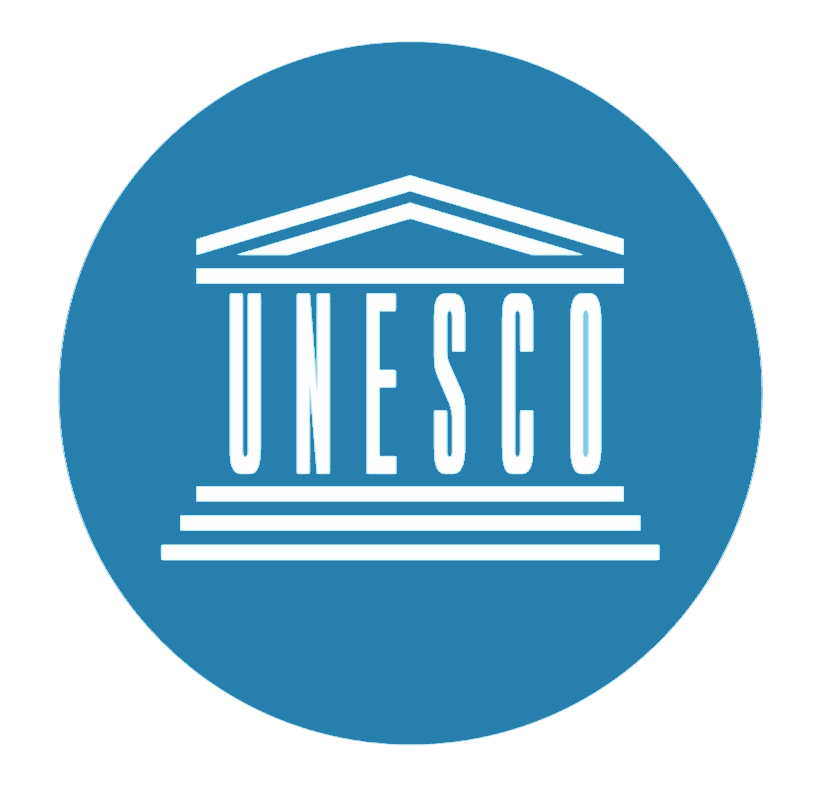 World Heritage
World Heritage
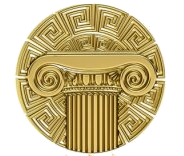 Civilization
Civilization
 Religion
Religion
 Financial
Financial
 Historical coins, banknotes
Historical coins, banknotes
 International cities
International cities
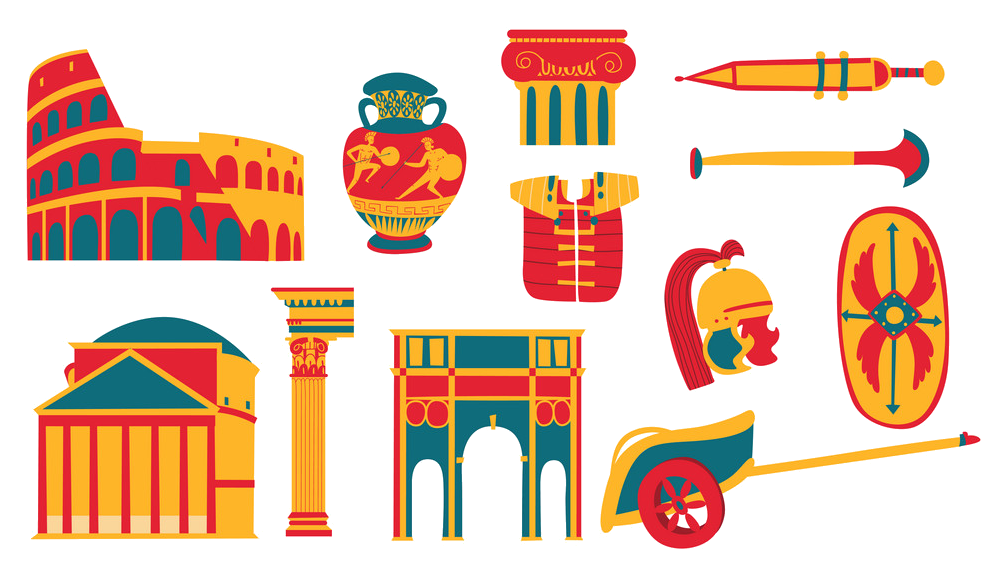 Cities founded by the Romans
Cities founded by the Romans
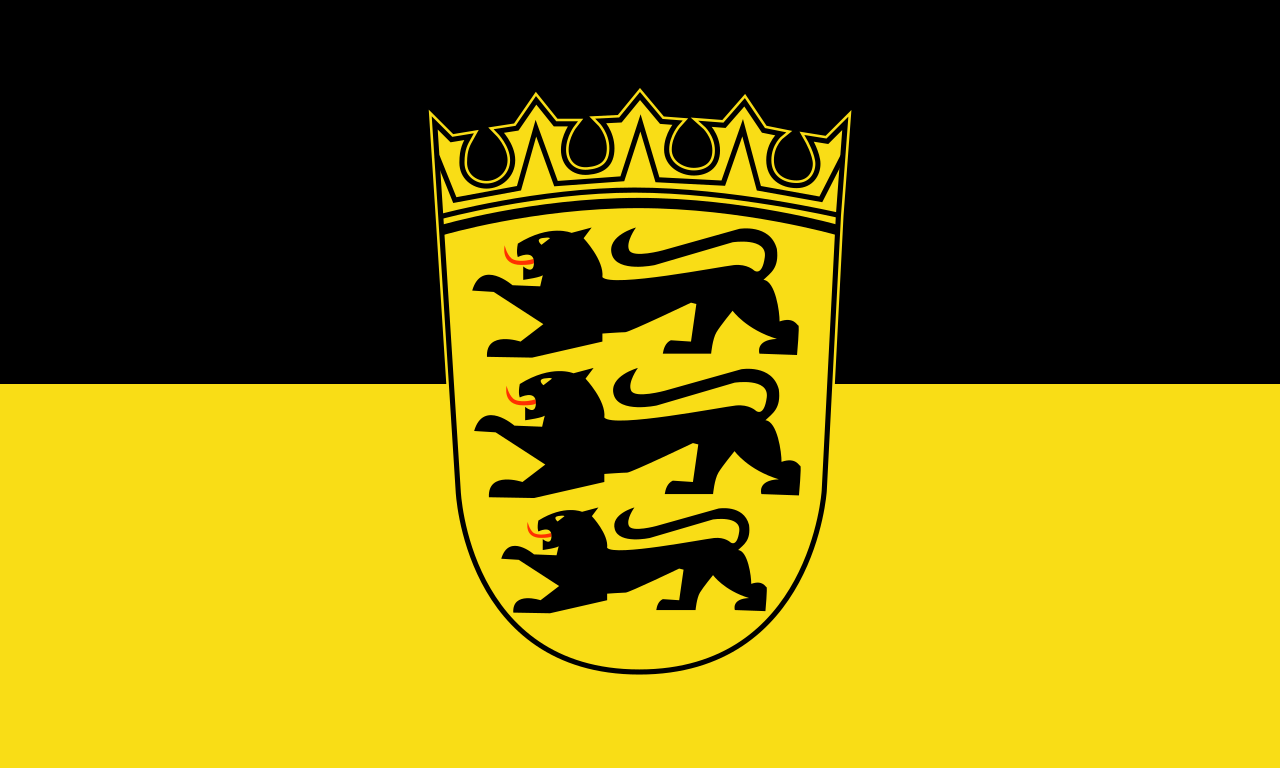 Baden-Wuerttemberg
Baden-Wuerttemberg